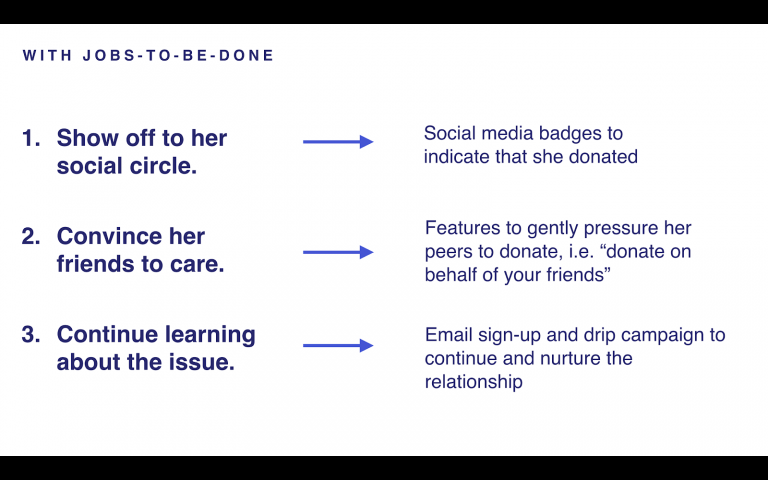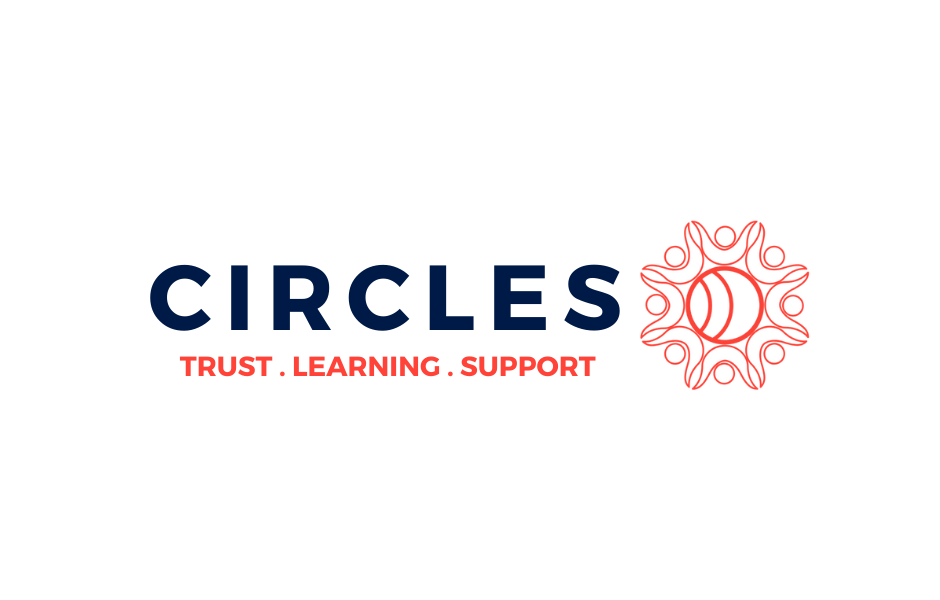If a Tree Falls in a Forest…: How to Understand Your Audience and Make Sure Stories Never Go Unheard
Sruthi Sadhujan
Hyperakt
Scott Hechinger, Esq.
Brooklyn Defender Services
Key Takeaways:
Real-life example of how user personas led to success in creating a criminal justice activism tool.
How to infuse a user-centered methodology & mindset to both online & offline communications.
Three ways (light, medium, & comprehensive) to understand your audience and what motivates them.
Slide Deck:
Breakout Notes:
Introduction
Scott Hechinger, Esq., Senior Staff Attorney, Brooklyn Defender Services, began by sharing the story of a defendant, Mr. Jones, that he encountered for a minor drug charge. He had his life on track and had been clean for months and was on his way to a rehabilitation clinic. For the first time after many arrests, he was interested in not pleading guilty. At end of a good conversation learning about his circumstances, Scott mentioned a plea offer, for which Mr. Jones would get credit for time served and get to go home, rather than waiting for a trial. Mr. Jones said, “Why didn’t you start with that?, I just want to go home.”
So their rich interaction came to nothing. Scott’s role became helping a man with a guilty plea, where he was more likely to be re-arrested and further marginalized. The officers who violated his rights were sent the message, ‘keep on doing what you’re doing. The system will insulate you.’
You won’t see stories like these on TV, but they are stories of everyday injustices that drive mass incarceration. They are the kind of stories that need to be told. His clients– disproportionately non-white people living in only certain neighborhoods–are targeted. The process is the punishment. The punishment is way broader than time in jail. People are arrested and humiliated and their lives can be ruined. It is often a vicious cycle.
Scott realized that public defenders are uniquely positioned to fight the fight. They can be storytellers. “What if we could get you to see what we see and understand what we know? What if we could mobilize PDs to witness what they see in court? What if we could combine forces and break the system of mass incarceration down and tear it apart from the ground up?”
He approached Sruthi Sadhujan, Director of Strategy & Accounts, Hyperakt, a social impact design agency to help him frame and build a public defender-driven platform.
Who is Your Audience?
Strategies for understanding your audience: Map along a continuum
Define your audiences along continuums of low vs high interest (horizontal), and low vs high influence (vertical). Plot specific audiences in each quadrant to define your top audiences. Focus on audiences (top 4 or so) in the top right quadrant
I.e. in their case Grassroots Organizations – “job” ability to contribute client stories
Public defender – “job” to broaden perspective on role and responsibility of PD
Media – their “job” was bring lesser known issues into the light
General Public – (narrower) people who care, i.e. Rene “Help me understand what is broken and why?”
3 THINGS TO TRY:
JOBS TO BE DONE – 15 Minutes
PROTO PERSONAS – 1 HOUR
USER RESEARCH – 1 WEEK
Dispel myths that you need money, time, and expert!
#1 Jobs to be Done Approach
In a traditional framework for fundraising campaign: you would set goals, build website, lay out facts, make a case for the need, raise money.
In a “Jobs to be done” framework, INSTEAD OF STARTING WITH GOALS, START WITH AUDIENCE
Start with a persona – i.e. “Rene” (one of the audiences in your matrix)
What would Rene “hire” the campaign to do?
Show off to her social circle – show that she cares
So you might create a social media badge to indicate she donated
Convince her friends to care
You would create features to gently pressure her peers to donate
“i.e. donate on behalf of your friends”
Continue to learn about the issue (evolve)
Deliverable might be an email sign up and drip campaign to continue and nurture the relationship
Ask what do we need to create for Rene (persona in your audience) to accomplish her job.
This approach:
Helps you implement what your audience(s) care about
Helps you identify the right problem to be solving
Shifts to outcome-based thinking
Creates content that is valuable and useful to your audiences’ specific needs
Helps generate strategic ideas for messages
The JTBD framework is deceptively simple. There are many dimensions: Functional
i.e. Tax deduction, corporate matching, Personal and Social
#2 Develop Proto Personas
A Traditional persona is a fictional representation of your audience – based on research
A PROTO PERSONA is a low-fidelity hack, not based on research but based on the creator’s experience and assumptions.
It’s better to use a proto persona than no persona!
Rethink what you consider to be research. If your donors are a target, ask your development staff. Think of your audiences as living breathing human beings. Build understanding and empathy for users and their environment. Common rally point for stakeholder alignment
Make informed decisions about will make your communications more effective
Align your objectives with their needs. Think about:
Who is this individual?
What is their current behavior?
What are they trying to accomplish?
What are their challenges?
Example – grassroots leader
I’m Tina. I’ve got a BA, nothing fancy, but don’t underestimate me. I know what I’m doing. Through my work I represent thousands of people. They trust me. They see me as one of them. I have close relationships with other grassroots organizations and care deeply about clients.
What are her barriers? Wary of lawyers telling her what to do. We’ve gotta convince her that we’re with her. Why would she be interested? I.e. With this new platform, she could zoom in and out, learn about the larger system and contribute stories?
What do we want her to do? (User actions): Share stories, Contribute content?
They developed a partners section on the website with info on allied community groups and their work It was an opportunity to connect with practitioners to start conversations and build alliances
#3 USER RESEARCH
The goal is to understand the needs behaviors and motivations related to achieving the objective. Do this BEFORE you create the personas. Conduct qualitative interviews, ethnographic observation, focus groups
How do you craft questions?
What is your audience trying to achieve? What’s motivating them? (Help craft jobs)
What pain points /challenges are you experiencing? (Help craft value proposition)
How might (our solution) fit into their current world? (Help craft value proposition)
What could they gain from it? (Validates or generates ideas for refinement)
They gathered lawyers – listened to lawyers stories, city and county, former prosecutors, grassroots, formerly incarcerated people – cast a broad net. It was a validation that people came. They were not just faces, but actually involve the community. There is a false assumption that justice is administered equally, We need to take back narrative and redefine what it means to be safe.
Why User Research? Builds layered and comprehensive understanding of your audience
Products created include:
website www.indefenseof.us
New campaign “We have rights” for immigrant communities
Conclusion
Define your audiences along continuums of low vs high interest (horizontal), and low vs high influence (vertical). Plot specific audiences in each quadrant to define your top audiences.
3 Approaches to Try:
JOBS TO BE DONE – 15 minutes
PROTO PERSONAS – 1 hour
USER RESEARCH – 1 week
Validate your assumptions. Test your idea, refine it, continue to iterate
Start small – START ANYWAY!
These notes were captured by The Communications Network and have been reviewed by the presenters. ComNet18 Breakout Session notes were made possible thanks to the generous support of the Kalliopeia Foundation.








